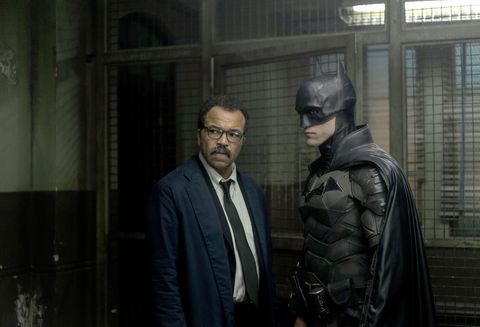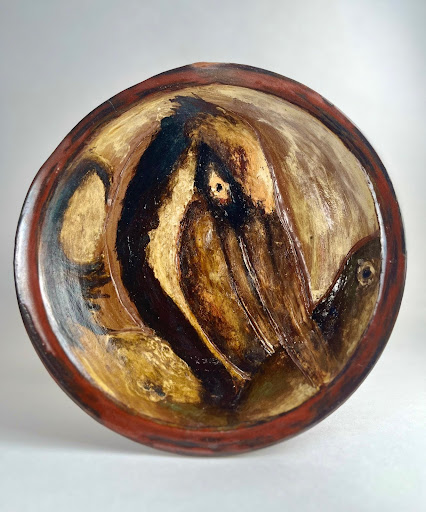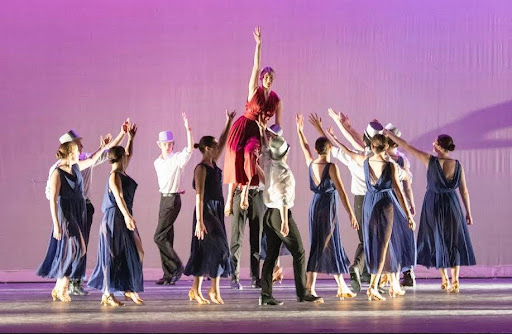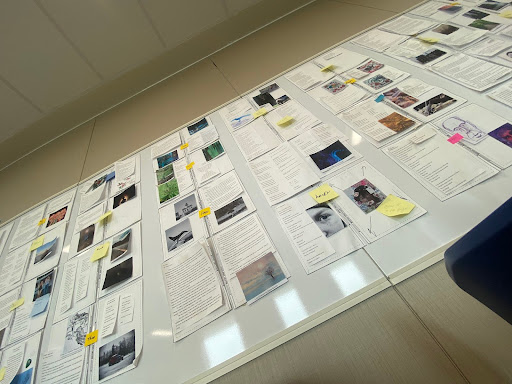The Batman is the Superhero Noir Film We’ve all Needed for Years

Batman, as a character, was imagined as a combination of Zorro and the hard-boiled detective noir protagonists of the 1930s and ‘40s. While modern portrayals of the character on film have had plenty of this heroic protector aspect, they’ve been rather lacking in showcasing Batman’s powers of deduction. They’ve had Batman exist in this space where he, as a character, feels more akin to Iron Man if he was a ninja than the “World’s Greatest Detective” comic readers are more used to. It would be very hard to tell that Ben Affleck or Christian Bale’s performances were of a character who debuted in something called Detective Comics, but Matt Reeves’ new film brings us back in touch with those roots in a great way.
Pattinson’s Batman is dark, brooding, and filled with a profound sense of rage, and he lives in a Gotham to match. Even though this is Bruce Wayne’s second year of being the Bat, violent crime is up, as is the use of the fictional narcotic called drops. In short, Batman’s current methods of beating up random criminals as conduit for his own poorly healed grief over his parents murder are not doing the city any favors.
Both Pattinson’s Bruce Wayne and his Batman are both reminiscent of an angsty highscholer, or that of a tortured artist; blind to the world around them, reclusive, and laser focused on one misguided goal. Pattinson’s version of Bruce Wayne is vastly different from the two other portrayals we’ve seen since the year 2000, as he has all but removed himself from his social and philanthropic obligations as Gotham’s most famous billionaire. His only concern is that of The Bat, and there are a lot of ways the film extends this point. With the exception of the funeral, when Bruce is out in public, he’s always ready to be Batman, with the eye-liner pre-applied and his batsuit in a backpack. It’s reminiscent of the briefcase armor from Iron Man 2, but the idea is taken to an extreme degree. This version of Bruce Wayne is almost only a mask for Batman, with Bruce being ghost-like and distant in almost every scene he’s in.
Batman’s collection of allies are well done and very present in this film, with Andy Serkis’ Alfred being a refreshing change of pace from the Michael Caine or Jeremy Irons performances of the past. Zoē Kravitz’s Selena Kyle is also quite well done, although the romance subplot she had with Pattinson’s Batman feels out of place, especially since a very large portion of her motivation in the film is based off avenging her dead “friend”(The queerbating and arguable “Bury your gays”-ing this movie enganges in are an entirely different can of worms), but the performance is good, and she plays off of the more sleuth-y Batman we’re shown in this film quite well. Jeremy Wright’s Jim Gordon is well done enough, although it isn’t much different from the characters previous incarnations.
The villains are where this film really shines in terms of characters. Colin Farrell is nearly unrecognizable as The Penguin, and does a great job in the role. His character does feel pretty cartoonish, which sounds like it would be off putting, given the nature of this version of Gotham, but Colin Farrell’s performance makes it work, while John Turturro’s Carmine Falcone, who is very central to the story, kind of falls into the background.
Paul Dano’s Riddler is the film’s main villain, and he delivers on everything you would want in a gritty, pulpy superhero drama, and, like a lot of this movie, is rather unlike anything seen recently in superhero films. The Riddler in this film is an off putting, politically charged, and menacingly dorky Zodiac Killer-esque foil to this film’s Batman. The two characters play off each other masterfully, with each character supporting the other’s raison d’être. Dano’s Riddler is a great springboard for Pattinson’s Batman to flex his detective muscles, and the lack of impact Batman and Bruce Wayne have had on Gotham are a great example of The Riddler’s motivation and general goals within the film.
The Riddler also serves to teach this film’s inexperienced and young Batman something. Vengeance will not save Gotham, and in order to make real change in the city, Bruce has to actually go out of his way to help the citizens of Gotham, both in and out of the mask. The scene towards the end of the film with Batman putting aside everything else and trying his hardest to save ordinary people from the flooding stadium is a tremendously well crafted scene, and it’s really the culmination of Bruce’s arc in the film.
The film also looks and sounds spectacular. Michael Giacchino’s score really stands out, the main Batman motif is both intimidating and somber, and is very versatile. The cinematography, done by Greig Fraser of Dune fame, is also very well done. This version of Gotham fits the film very well, it’s hollow and rainy, it’s a very noir-inspired Gotham. The color palette in this film is all reds, blacks, and purple-blues, and it’s very enthralling. This film’s version of The Batmobile is immense and foreboding. Modeled after a 1960’s Dodge Charger, it both looks and sounds like something out of Mad Max, and it’s perhaps the best batmobile we’ve gotten in film yet.
Overall, The Batman is a wonderful first outing for Robert Pattinson’s supposed upcoming trilogy of Batman films, with a dark and fresh take on the world of Gotham, and excellent performances from the entire cast. Highly recommended.




